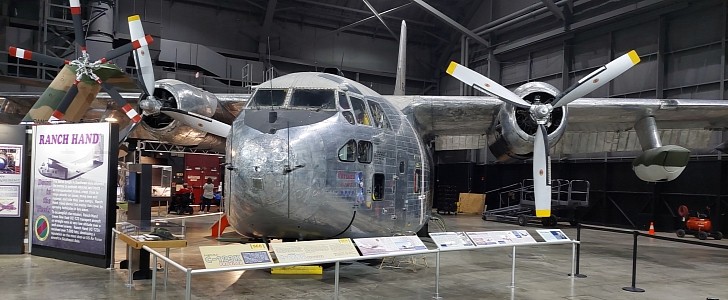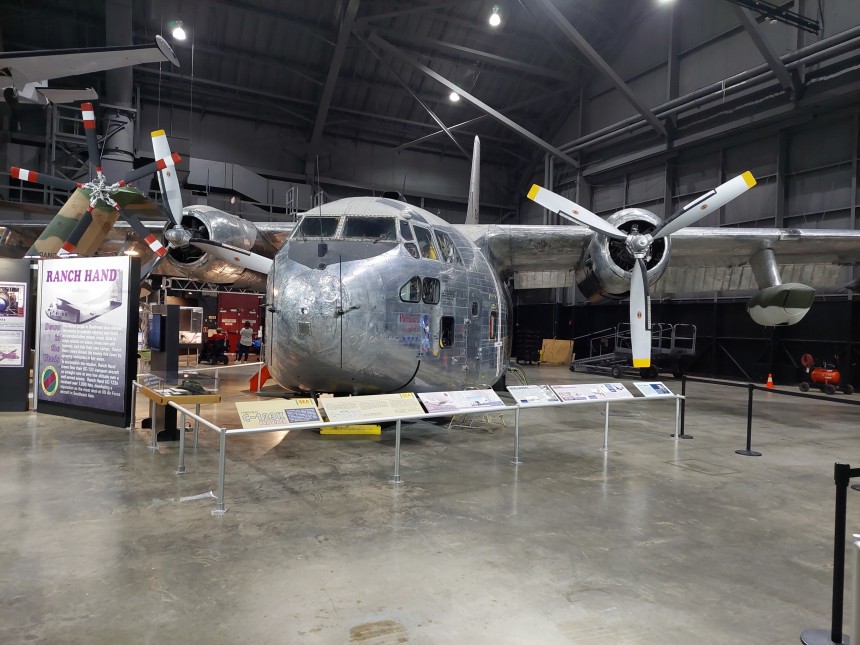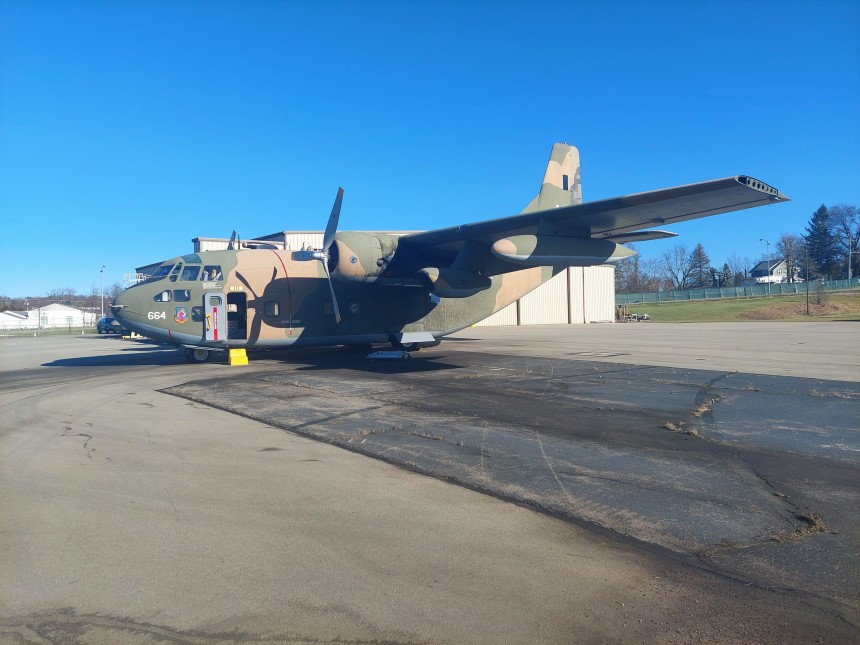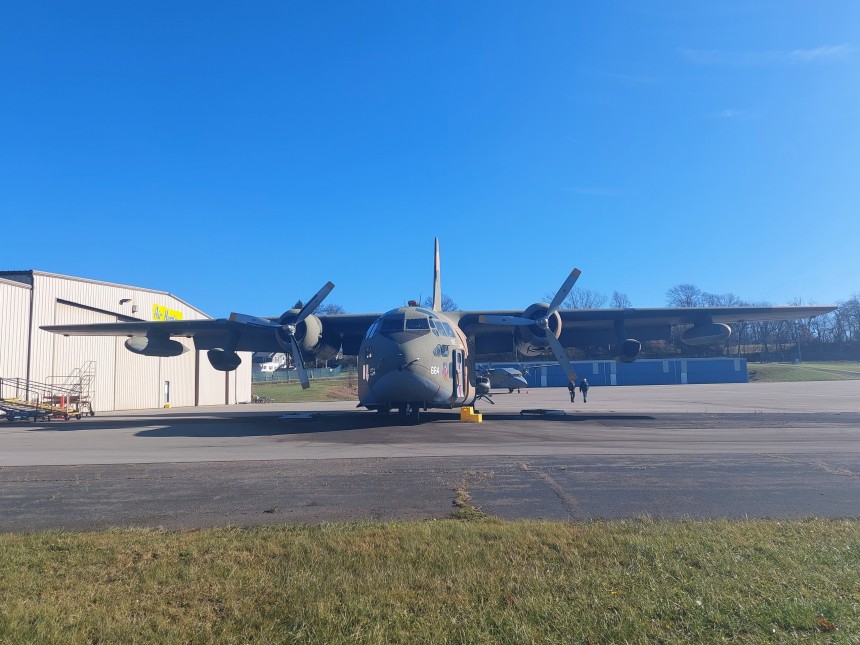You learn things you never would have guessed possible when you travel the country, looking for places showcasing airplanes for a living.
The first and foremost among these lessons is that aviation history isn't as cut and dry as we might think. Especially when it comes to the American War in Vietnam, a select handful of planes from both sides tend to hog all the glory. We're looking at you, F-4 Phantom II. But for every Phantom, Crusader, or Thunderchief, you needed a giant cargo plane to keep them from falling apart.
This is just that plane, the Fairchild C-123K Provider. Before the days of the C-130s and their endless variants, the Provider filled the very same needs. If we told you not only was the Provider not designed by Fairchild, but was initially designed as a glider, would you believe us?
Well, get ready to start believing because that's precisely the case with this aircraft. Indeed, the Provider began as the design of a Ukranian born Russian-American émigré named Michael Stroukoff, for the Chase Aircraft Company of Trenton, New Jersey.
Chase's claim to fame in the Second World War was tactical assault gliders. Unpowered aircraft capable of carrying troops and cargo into combat and existing discarded without the need for expensive fuel and engine maintenance.
The first of these Chase Gliders designed under Stroukoff was the YGC-14. This glider would evolve into the XG-20, an all-metal air frame with the carrying capacity exceeding many World War II cargo planes from only a few year's prior.
The real ticket that turned the XG-20 from zero to hero was the addition of two R-2800 Double Wasp engines from Pratt & Whitney of East Hartford, Connecticut, each rated at 2,500 horsepower. Considering there wasn't an airplane big or powerful enough to tow the Chase Glider, the new engines proved to be the difference makers between a longstanding workhorse and an irrelevant abandoned military project.
Two powered versions of the XC-123 prototype were constructed, one using its given name alone and the other wearing the XC-123A designation. The XC-123 carried quad turbojet engines in twin nacelles on either side of the aircraft.
It only had minor benefits over the piston equivalent, as absolutely badass as that might sound. The piston-engined variants would be designated C-123B Providers when the design was purchased from the struggling Chase company by the Fairchild Corporation of Hagerstown, Maryland.
It was while under design study at Fairchild that a stroke of genius happened. Instead of four jets or twin-piston engines, why not a combination of both? As it turns out, the combo of dual Double Wasps and a single turbojet engine in each wing was an absolute gem. The new C-123K 60,000 lb (27,216 kg) fully loaded absolute unit of an airplane was ready to take to the skies of a war brewing across the world in Vietnam.
All while carrying more cargo and still taking off in shorter distances than on jet or piston power alone. In a time before the Lockheed C-130 Hercules became the only relevant cargo transport of the NATO Alliance, the Provider did just about everything the Herc did.
Whether it was used as a mobile ambulance, a light bomber, a troop transport, paratrooper jumper platform, and even as a spreader of the dreaded agent orange deforesting compound in the infamous Operation Ranch Hand, the Provider performed exemplary work. Even as the war effort around it faltered, and was eventually defeated.
Over 250 Providers formed the backbone of American operations in Vietnam. Many were delivered to the U.S. Coast Guard and Air National Guard after the war and served into the early 80s. Several prototype aircraft based on the Chase Glider and the Provider were designed for things like Vertical Takeoff and Landing (VTOL) operations, and polar explorers with skis for landing gears.
But the C-123K stands above all in terms of the sheer insane amount of grunt work performed over a decades-long service life. The Air Forces of Laos, Taiwan, Thailand, Cambodia, Brazil, South Korea, and others also loved the airplane in its time in their ranks. Today, only one C-123 remains in airworthy condition, a K variant nicknamed "Thunderpig." It's stored and maintained by the volunteer crew of the Air Heritage Museum in Beaver Falls, Pennsylvania.
Recently, autoevolution was granted access inside the last remaining airworthy C-123. It was an experience we won't soon forget. Be sure to check out that item and so much more right here on autoevolution.
This is just that plane, the Fairchild C-123K Provider. Before the days of the C-130s and their endless variants, the Provider filled the very same needs. If we told you not only was the Provider not designed by Fairchild, but was initially designed as a glider, would you believe us?
Well, get ready to start believing because that's precisely the case with this aircraft. Indeed, the Provider began as the design of a Ukranian born Russian-American émigré named Michael Stroukoff, for the Chase Aircraft Company of Trenton, New Jersey.
Chase's claim to fame in the Second World War was tactical assault gliders. Unpowered aircraft capable of carrying troops and cargo into combat and existing discarded without the need for expensive fuel and engine maintenance.
The real ticket that turned the XG-20 from zero to hero was the addition of two R-2800 Double Wasp engines from Pratt & Whitney of East Hartford, Connecticut, each rated at 2,500 horsepower. Considering there wasn't an airplane big or powerful enough to tow the Chase Glider, the new engines proved to be the difference makers between a longstanding workhorse and an irrelevant abandoned military project.
Two powered versions of the XC-123 prototype were constructed, one using its given name alone and the other wearing the XC-123A designation. The XC-123 carried quad turbojet engines in twin nacelles on either side of the aircraft.
It only had minor benefits over the piston equivalent, as absolutely badass as that might sound. The piston-engined variants would be designated C-123B Providers when the design was purchased from the struggling Chase company by the Fairchild Corporation of Hagerstown, Maryland.
All while carrying more cargo and still taking off in shorter distances than on jet or piston power alone. In a time before the Lockheed C-130 Hercules became the only relevant cargo transport of the NATO Alliance, the Provider did just about everything the Herc did.
Whether it was used as a mobile ambulance, a light bomber, a troop transport, paratrooper jumper platform, and even as a spreader of the dreaded agent orange deforesting compound in the infamous Operation Ranch Hand, the Provider performed exemplary work. Even as the war effort around it faltered, and was eventually defeated.
Over 250 Providers formed the backbone of American operations in Vietnam. Many were delivered to the U.S. Coast Guard and Air National Guard after the war and served into the early 80s. Several prototype aircraft based on the Chase Glider and the Provider were designed for things like Vertical Takeoff and Landing (VTOL) operations, and polar explorers with skis for landing gears.
Recently, autoevolution was granted access inside the last remaining airworthy C-123. It was an experience we won't soon forget. Be sure to check out that item and so much more right here on autoevolution.










